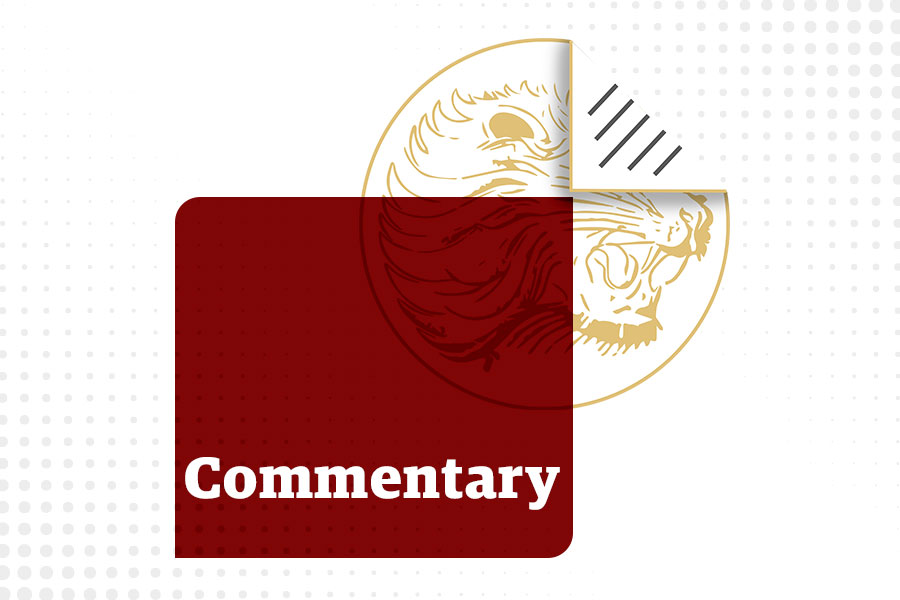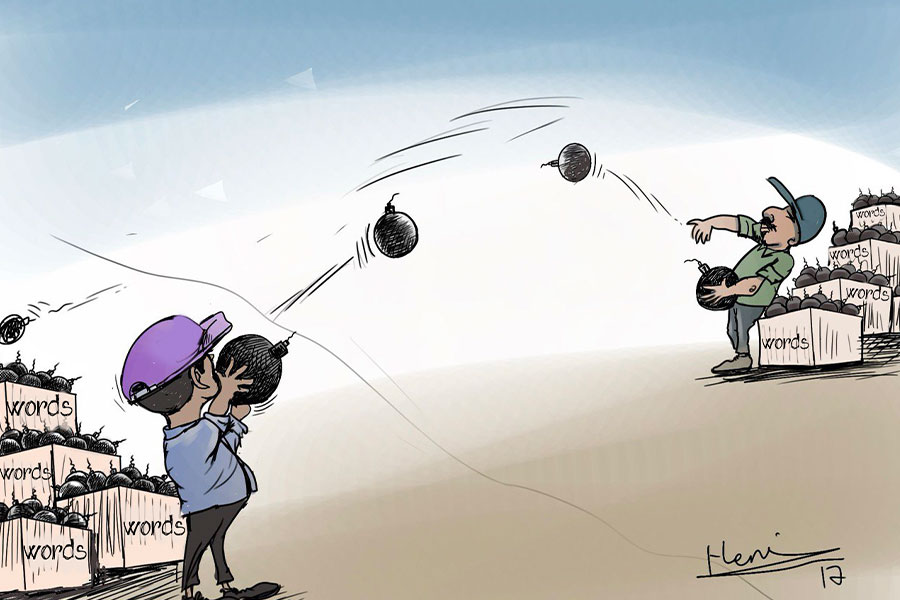
Agenda | Aug 20,2022
Feb 1 , 2019
By Stephen S. Roach
Global trade is set to be impacted by protectionism by the United States, an economic slowdown in China and Brexit. The effect will be noticeable on world economic growth, writes Stephen S. Roach, a faculty member at Yale University and former Chairman of Morgan Stanley Asia. This article originally appeared on Project Syndicate.
As the trade cycle turns, there goes the global economy. But there is a new twist. With growth in global trade sharply diminished since the 2008-2009 global financial crisis, an upsurge of protectionism and disrupted global supply chains is all the more problematic. There is a distinct possibility that a turn in an already weakened trade cycle could spark a surprisingly swift deterioration in the global economy.
Early hints of just such an outcome are evident in the January update of the International Monetary Fund’s (IMF) World Economic Outlook. While the IMF has revised downward its 2019 forecast of world gross domestic product (GDP) growth by 0.2 percentage points to 3.5pc, it has made just a fractional reduction to its projection of four percent global trade growth. This is certainly puzzling. In a climate of increased tariffs between the US and China, with threats of more to come, and given Brexit-related risks to eurozone trade, there is a good reason to look for more significant downward revisions to the global trade outlook.
This would be especially problematic, given that the world economy’s support from global trade is already on shaky ground. Following a crisis-induced plunge of 10.4pc in the volume of global trade a decade ago - a modern-day record - recovery has been muted. After a brief two-year rebound beginning in 2010, world trade growth averaged 3.6pc in the six years since 2012 - about half the average annual pace in the two decades before the crisis.
To be sure, the slowdown in world trade may be traceable to the global economy’s relatively weak post-crisis recovery. But the ratio of growth in global trade relative to growth in world output - an indicator that normalises for different recovery trajectories - says otherwise.
In the two prior expansions - lasting half a decade beginning in 1985 and then 2002 - this ratio averaged 1.6. Once the cyclical noise of post-recession rebounds subsided, growth of global trade was about 60pc faster than growth in world GDP. By contrast, in the current expansion, that ratio has averaged just one over the comparable six years beginning in 2012, with global trade having slowed to a pace only equal to the growth of world output.
Debate rages about why growth in global trade has slowed sharply in recent years. Extensive research published by the IMF in late 2016 attributed the slowdown largely to subdued business capital spending, finding only small effects from protectionism. Yet the world has changed a lot in the subsequent two years.
While the capital spending shortfall persists - despite a temporary increase from large corporate tax cuts in countries like the United States - there has been a marked increase in protectionism, with attendant pressures on global supply chains. As a result, a rethinking of the IMF findings is in order.
US President Donald Trump’s administration has obviously taken the lead in moving from trade liberalisation and globalisation to protectionism and fragmentation.
One line in Trump’s inaugural address said it all: “Protection will lead to great prosperity and strength.”
Rhetoric quickly gave way to action and was followed in short order by US disengagement from the Trans-Pacific Partnership, replacement of NAFTA with a higher-cost United States-Mexico-Canada Agreement and, of course, a succession of tariff hikes against China. Withdrawal from the Paris climate agreement, threats to pull out of the World Trade Organization, and complaints about NATO participation round out US disengagement from multi-lateralism and the global trading system that it has long supported.
Against this backdrop, a rapidly unfolding China slowdown is all the more problematic. While recent GDP data point to only a slight deceleration in late 2018 - 6.4pc annual growth in the fourth quarter versus 6.5pc in the third quarter - monthly data revealed sharp declines in December retail sales of key discretionary consumption items such as automobiles and mobile phones.
Reflecting this deterioration in domestic demand, Chinese imports plunged by 7.6pc last year, a worrisome about-face after a 16.1pc gain two years ago. At the same time, China’s exports fell 4.4pc in December as tariff-related weakness in US markets finally appears to be taking a meaningful toll.
Depending on the outcome of US-China trade negotiations, there could well be more bad news for Chinese exports to the US. Moreover, while China is moving aggressively to counter the cyclical shortfall in domestic activity, it could be several months before its policy moves start to take hold.
In the meantime, risks remain very much on the downside for Chinese import demand. That underscores a key risk to the IMF’s latest forecast: China is the world’s largest exporter and third largest importer. Its negative impact on an already weakened global trade cycle is only just starting to become apparent.
The disruptive effects of Brexit can only exacerbate this problem. The eurozone, as a whole, ranks right behind China among global exporters and slightly above China as the world’s second largest importer. With exports to the United Kingdom accounting for about three percent of the European Union’s GDP - considerably higher for Belgium, Ireland, and the Netherlands - Brexit-induced frictions to global trade can hardly be taken lightly.
The global trade cycle is facing major stress in 2019, and markdowns have only just begun. This underscores the risks of a major shortfall in world GDP growth. In a still tightly connected world, no major economy will be an oasis. That includes the US, whose 45th president continues to insist that it’s easy to win a trade war. Maybe not.
PUBLISHED ON
Feb 01,2019 [ VOL
19 , NO
979]


Agenda | Aug 20,2022

Radar | Feb 24,2024

Commentaries | Feb 03,2024

Viewpoints | Oct 28,2023

Radar | Mar 11,2023

Viewpoints | Jun 18,2022

Commentaries | Jun 21,2025

Fortune News | Aug 10,2019

Radar | Nov 20,2021

Radar |

My Opinion | 131967 Views | Aug 14,2021

My Opinion | 128357 Views | Aug 21,2021

My Opinion | 126294 Views | Sep 10,2021

My Opinion | 123910 Views | Aug 07,2021

Dec 22 , 2024 . By TIZITA SHEWAFERAW
Charged with transforming colossal state-owned enterprises into modern and competitiv...

Aug 18 , 2024 . By AKSAH ITALO
Although predictable Yonas Zerihun's job in the ride-hailing service is not immune to...

Jul 28 , 2024 . By TIZITA SHEWAFERAW
Unhabitual, perhaps too many, Samuel Gebreyohannes, 38, used to occasionally enjoy a couple of beers at breakfast. However, he recently swit...

Jul 13 , 2024 . By AKSAH ITALO
Investors who rely on tractors, trucks, and field vehicles for commuting, transporting commodities, and f...

Jul 5 , 2025
Six years ago, Ethiopia was the darling of international liberal commentators. A year...

Jun 28 , 2025
Meseret Damtie, the assertive auditor general, has never been shy about naming names...

Jun 21 , 2025
A well-worn adage says, “Budget is not destiny, but it is direction.” Examining t...

Jun 14 , 2025
Yet again, the Horn of Africa is bracing for trouble. A region already frayed by wars...

Jul 6 , 2025 . By BEZAWIT HULUAGER
The federal legislature gave Prime Minister Abiy Ahmed (PhD) what he wanted: a 1.9 tr...

Jul 6 , 2025 . By YITBAREK GETACHEW
In a city rising skyward at breakneck speed, a reckoning has arrived. Authorities in...

Jul 6 , 2025 . By NAHOM AYELE
A landmark directive from the Ministry of Finance signals a paradigm shift in the cou...

Jul 6 , 2025 . By NAHOM AYELE
Awash Bank has announced plans to establish a dedicated investment banking subsidiary...